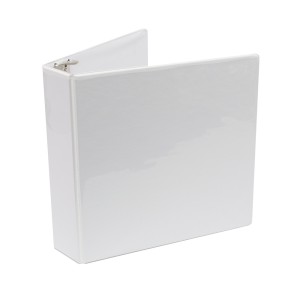The Binder Planning Model
I’m stepping into a new role this year and I’ve already found myself getting pulled into the Binder Planning Model. You know the one, where the entire year is laid out in the binder, and you’re just turning the pages.
To me, it’s a metaphor for school planning in general. In schools, we like to organize our thinking around binders. A sequential entry of to-dos, dates, events and directions for everything that happens throughout the year, from day 1 to day 185, in one place. A binder, sitting on a shelf, within arm’s reach at a moment’s notice. It’s a practice that has perpetuated for generations.
One which reminds me of that old teaching adage, “Teach 25 years, not one year 25 times”. When I was new to teaching, I was handed a binder for the year and told, “here you go”. I dutifully took one look at it, realized it was mostly out of date and set about rebuilding the content from the ground up. The one thing I took from the binder was the general course outline. I put that outline into an online learning management system (Moodle at the time, I pre-date Google Classroom) and proceeded to pull in a ton of relevant content from many different sources, which I continuously updated, modified and adjusted every year.
Just as I didn’t want to fall into the same routine in the classroom year after year, I don’t want to fall into the same administrative routines year after year now.
Yes, new standards come along and new regulations are passed, and we dutifully update pages in the binder to keep current (we all do that, right?). But the binder format itself is limiting. It’s hard to adapt and update multiple copies with fidelity. It promotes sequential thinking and “sticking to the plan” even in the face of obvious need for adaptation. The binder models a “gate keeper” mode of information sharing that doesn’t apply in the connected world we now live and work. Granting access to multiple people requires lots of manual intervention (copy and send the green pages, replace page 20 with green 20, etc…). The content remains locked away on a shelf, unsearchable, and only referenced by a few. It’s a planning tool from the 20th (19th?) Century. We need a new planning model for the 21st Century.
What if we threw away the binder and every year we had a conversation about what we should do, how we should do it and why we should do it. What if instead of a binder, we had a live planning document, a shared google doc accessible to the entire staff. A scrolling sea of infinite planning possibilities. What could we accomplish if every year there was a blank slate with a running history of the years before. Not a pre-set script to be repeated, but a knowledge base on which to build and transform for they year ahead?
I think it’s time to move the annual department plan from a binder to a collaborative planning doc. I’ll let you know how it goes.

Rachel Medeiros 8:30 am on September 14, 2016 Permalink |
I love these thoughts. It’s so easy to get sucked in to the binder. However, I’d also say this same mentality can easily happen with a Google Doc of lesson planning. Our Google Docs die sometimes instead of staying up to date. I wonder what would happen if we began every year with time to build lessons from scratch, thinking about our goals for each unit. We might still carry things over, but we’d probably get rid of a lot of things too. I’m excited to be doing a Fall CUE session on this. :)
Erica 4:34 pm on December 15, 2016 Permalink |
I can’t even imagine what it would be to start the year with time to build lessons from scratch – It would be so nice to have a little time to evaluate what to keep and what to get rid of.
Joel 4:21 pm on October 26, 2016 Permalink |
Wow!! I absolutely love this idea!! I use Google Docs, and Google Forms in my classroom with my students. My teaching partners and myself have a google doc that we share and it is a wonderful way to collaborate and share ideas!! I was even thinking more along the lines of creating a Google folder teachers across the nation could add to for their specific grade level or subject. Think about all the amazing ideas that would be posted from people all over the globe. Love your post! Thanks for sharing!